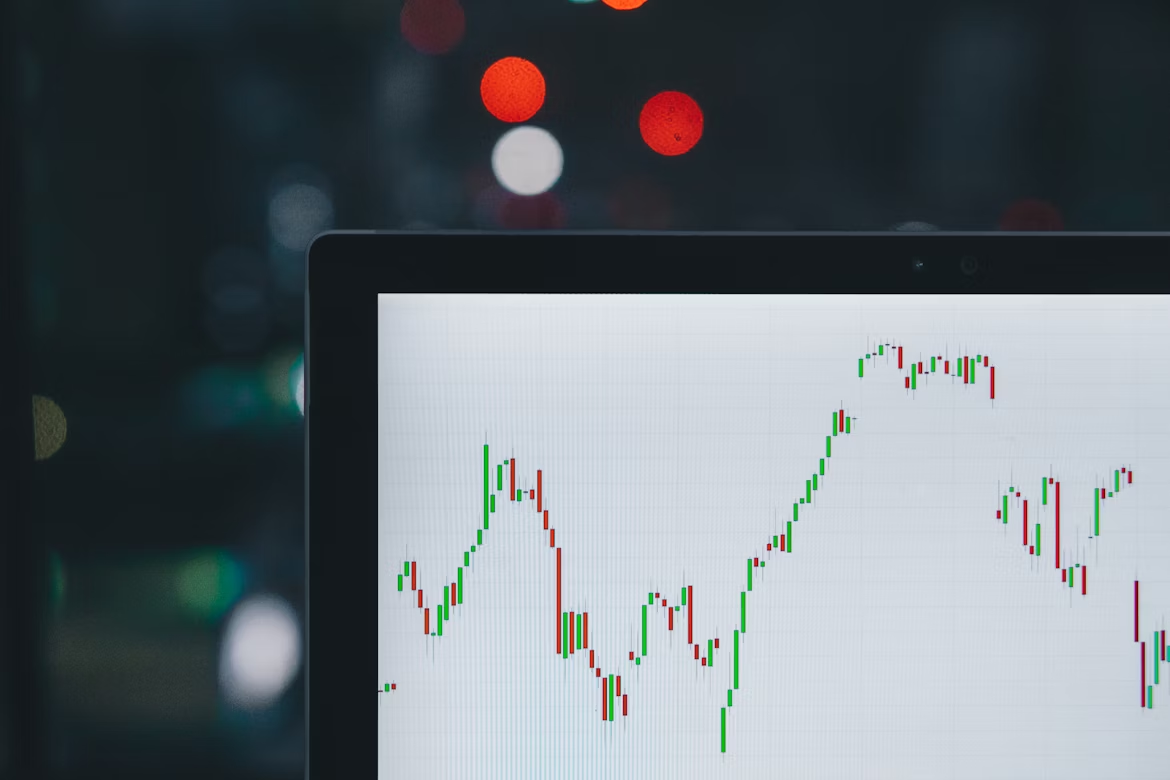Essential Gold Trading Strategies

People are often drawn to gold because it carries a sense of stability when everything else feels uncertain. It’s been a part of global finance for centuries, and although futures trading feels very modern, the interest behind it is old. When someone starts trading gold futures, the main question is whether they can approach it in a way that protects discipline, money, and emotional balance. Many jump in with hope, but hope is not a rule or a method. A trader needs structure, not adrenaline.
Before anyone thinks about entries, charts, or signals, it helps to develop a clear intention for why they want to trade gold futures in the first place. Some people are attracted by frequent price movement during active sessions. Some like the way gold reacts to news. Others enjoy a product with clear exchange rules. Any reason can be valid, as long as it leads to measured decision-making. The person who approaches the market to test random hunches faces a more challenging road than the one who plans, studies, and records results.

Our Mission
To make gold and crypto trading accessible by providing clear guidance, reliable information, and practical tools. We aim to support traders at every level with straightforward resources that simplify complex markets.

Our Vision
To become the most trusted online destination for gold and crypto trading education, helping traders worldwide grow their knowledge, improve their strategies, and stay ahead of market opportunities.

Starting With a Trade Plan Instead of a Trade
Why Planning Comes Before Execution
People enter trading gold futures for many reasons, but the foundation of long-term participation rests on a written plan that fits the trader’s pace, account size, and market knowledge. A plan can be short, but it must be clear. It usually explains which sessions will be traded, which setups are valid, which trades are off-limits, and when to step aside.
Creating this structure helps reduce panic when the market accelerates or behaves in ways that trigger emotion. Without guidelines, each trade becomes a new emotional decision, and emotional choices are rarely consistent. When the trader writes down their rules instead of holding them mentally, they reduce self-negotiation during fast price moves, which protects clarity. A plan also helps identify when to stop trading for the day, which is often ignored until damage occurs.
Consistency grows when a trader knows exactly what a valid setup is and waits for it without chasing price. New traders often want to test every signal they see, but a defined plan filters noise and protects attention. The aim is not perfection, but a structure that can be reviewed after the session. When rules are followed, the trader has data worth studying. When laws are ignored, the results mean nothing because they came from random behavior.
Risk Control as the Core of the Plan
Risk control is at the heart of trading gold futures because prices can move quickly, especially during high activity periods. Without fixed risk, one mistake can outweigh several correct trades. Some traders choose a fixed amount of capital to risk each time, while others prefer a percentage that adjusts with account growth or reduction. Either approach is acceptable if used consistently. Sudden changes in risk levels can create stress, and stress can interrupt clear thinking.
A simple stop loss that is placed before clicking buy or sell can protect both money and mental focus. Trade size must also be aligned with risk, not with excitement or fear of missing out. When size and risk are controlled, the trader can focus on logic rather than the size of the outcome. Good plans create staying power, and staying power creates experience.
How Price Structure Guides Decisions
Reading Key Levels Without Guessing
Many decisions in trading gold futures involve recognizing how the price reacts around levels that have shown interest in the past. These levels can be highs, lows, session opens, volume zones, or any repeated point where price has shown hesitation or strength. When the price returns to a familiar area, the trader watches instead of guessing.
If price pauses or rejects with clear candles, it may show that traders are paying attention again. This does not promise a reversal or continuation, but it creates context. Without context, decisions come from impulses or predictions based on hope. When a trader focuses on price behavior around these levels, they shift from guessing toward observation, which usually improves decision quality.
A breakout past a respected level can signal strength if the breakout holds with conviction. Many new traders buy or sell the moment the price crosses a line, but professionals usually wait to see if the move has, because many breakouts fail and trap traders who enter too early. The goal is to observe how the price reacts after contacting a vital zone.
Momentum and Timing Awareness
Momentum is significant in trading gold futures, especially for short-term strategies. Strong candles may signal interest and possibly trend continuation, but momentum must be confirmed, not assumed. Sudden fast moves can tempt traders to enter late, turning a potential opportunity into a risky chase. When momentum increases during major announcements, spreads and liquidity can shift quickly, so patience is often safer than reaction.
A trader who follows momentum without preparation may experience rapid emotional swings. A trader who waits for controlled continuation or a clear pullback has a calmer approach. Timing matters because gold futures can turn quickly, and entering when structure is already stretched creates unnecessary stress. Observing momentum with patience can lead to decisions based on logic rather than urgency, which usually supports long-term progress.
Using Indicators With Moderation
Why Too Many Indicators Can Damage Awareness
Many traders rely on indicators because they offer visual comfort, especially during the early stages of trading gold futures. Indicators can feel like safety nets, but they can also create hesitation when too many appear on the chart. When a screen is filled with overlapping tools, the trader may confuse themselves rather than gain clarity.
A chart already contains information through price candles, volume, structure, and time. Indicators should highlight or support what is already visible, not replace the trader’s eyes or common sense. The more tools that are added, the easier it becomes to seek confirmation rather than take responsibility for decisions.
Confidence fades when the trader waits for multiple signals to match at once, which can lead to missed opportunities or late entries. Technical tools should act as assistants, not decision-makers, and traders who learn to interpret raw price action often progress faster because they understand what signals look like without needing many filters.
Choosing Tools With Purpose Rather Than Habit
A small group of indicators can help bring clarity if chosen with intention. A basic moving average can provide a simple view of whether the price currently leans toward buyer strength or seller pressure without dictating a direct trade. A volatility tool can help a trader understand when the price might begin to expand after a period of consolidation, which matters because gold futures can shift quickly.
Volume studies can reveal whether movement has real participation or is occurring with low conviction. When any of these tools disagree with the price structure, the chart should be respected first because it represents real-time auction behavior. If confusion arises, it is often wiser for the trader to pause and observe rather than force an entry.
Indicators have value when they reduce mental noise, but when they become the focus of every decision, they limit awareness and delay growth. A calm and selective approach builds trust in personal judgement, which is key to long-term performance in trading gold futures.
Understanding What Moves Gold
How Global Factors Influence Price Behavior
Gold has a long history of responding to global conditions, which is why understanding external factors is key to trading gold futures. Inflation reports, employment releases, crisis events, and market fear can alter how traders react to gold, and changes in central bank commentary often shift interest rate expectations. When interest expectations rise, some investors may reduce gold exposure because alternative assets may feel more attractive.
When expectations fall or uncertainty rises, traders may look to gold as a protective asset. Currency strength also influences the metal’s value, especially when the US dollar moves sharply, because gold is priced in dollars on major exchanges. A strong dollar can put downward pressure on gold prices, while a weakening dollar can increase interest in gold. These influences are not guaranteed signals, yet they help the trader understand whether price changes are technical, emotional, or fundamental.
A trader who pays attention to these drivers may gain context that supports decision-making rather than reacting blindly to sudden candlestick spikes.
Staying Informed Without Becoming Obsessed With News
Market awareness does not require constant monitoring of news updates, but it does require basic preparation before trading sessions. A simple check to see whether essential announcements are scheduled can help a trader avoid entering trades just seconds before volatility hits.
This awareness prevents confusion when chart patterns appear clear but the price refuses to behave logically. If a trader enters a position without realizing that a major economic release is moments away, they may blame their strategy when the real issue was timing. Prepared traders understand when price might be influenced by forces outside of chart structure, which gives them the choice to trade or wait until conditions settle. Calm and steady information management helps maintain emotional control, and emotional control is as valuable as technical skill when trading gold futures.
Controlling Position Size and Emotional Load
How Position Size Shapes Thought and Behavior
Every trader hears advice on entries and chart patterns, yet position size rarely gets the same attention, even though it influences how the mind reacts during trades. The size chosen for a position affects how the trader interprets every candle, pullback, and spike. When the size is large, even minor fluctuations can trigger stress because the financial impact feels heavier than the trader can mentally handle.
Thoughts focus on losing rather than on managing the process. Fear rises, clarity fades, and the trader begins reacting to movement rather than reading structure. Small decisions turn into emotional battles, and the trade becomes a test of nerves instead of strategy.
When size is controlled, the trader sees the chart with a cleaner perspective because the financial pain or reward tied to the next price move is manageable. This reduces the urge to adjust stops impulsively, exit early, or add to a losing trade in an attempt to escape fear. Calm thinking improves decision-making, and the trader can observe what the price is actually doing rather than what they wish it would do. Many seasoned traders have learned that large size does not accelerate progress. Instead, it amplifies emotional triggers that distort judgement and shorten careers.
Connection Between Personal Comfort and Consistency
A trader must know the size level that feels comfortable when trading gold futures. Comfort does not mean avoiding risk. It means choosing a level that allows the trader to execute decisions with clarity and remain steady during fluctuations. When size is selected based on confidence, knowledge, and account structure rather than greed or fear of missing out, trading performance becomes more constant.
Position sizing is not a fixed number. It grows when skill, capital, and discipline grow. Increasing size too early can break confidence and lead to emotional decisions that overshadow good planning. By keeping size aligned with mental readiness, the trader creates a sustainable path, which matters more in trading gold futures than a single impressive trade. Slow growth in size leads to improvement through repetition rather than chance.
When to Stay Out
Recognizing When Conditions Do Not Support a Trade
Not every market environment offers high-quality opportunities, and trading gold futures requires recognizing when conditions become less clear. When the structure looks messy or the direction feels unclear, forcing a trade can quickly become a lesson in frustration. Many traders assume progress requires constant participation, but consistency often develops from patience rather than continual activity.
When price is drifting aimlessly or reacting wildly to data, entries become unpredictable, and stops can be hit easily. A trader who pauses during unclear conditions protects capital and confidence, both of which are required to keep trading long term.
News is another reason to hold back. Scheduled releases, such as inflation updates or central bank comments, can shift movement in unpredictable ways. Entering a trade just before such events can lead to sharp price movements that have nothing to do with structure. The trader might blame their strategy, even though timing was the real issue. Knowing when news is expected allows the trader to step aside if conditions appear unstable. This does not reduce opportunity. It protects readiness for when the market returns to its normal rhythm.
Avoiding Trades as a Form of Skill, Not Weakness
Some traders worry that staying out means they are missing progress, but staying flat can be the smartest choice. A day without trades can still be productive if it brings more clarity or protects mental focus. Trading gold futures requires emotional maturity, and maturity includes waiting for conditions that match a trading plan. Boredom can lead people to take random trades, so learning to manage idle time matters. Reviewing charts, studying patterns, or journaling may feel less exciting than entering a trade, but these habits have more long-term value.
The market will reopen tomorrow, and it may offer cleaner setups. Successful traders measure progress by discipline, not activity. Walking away is sometimes proof of strength, not hesitation.
Mistakes Many Traders Learn From Too Late
How Small Habit Errors Grow Into Major Setbacks
Most traders believe the primary battle is spotting entries, but the common issues that lead to failure often come from habits formed outside of charts. Reacting to fast movement, shifting stops out of fear, or depending on a single indicator while ignoring market context are slow drifts away from logic. These mistakes rarely feel significant in the moment, yet they compound over time.
A trader who keeps switching strategies after a few losses never builds an accurate performance sample, which means they cannot determine whether their method works or if they simply did not allow it enough time. Some never track results at all, so they judge progress by emotion instead of documented evidence. Without records, progress depends on memory, which is unreliable under stress. Thinking like a professional means treating trading as a performance skill rather than a guessing game, which requires personal accountability rather than constant strategy hunting.
Why Honest Review Separates Growth From Repetition
When traders look back at executed trades honestly, they often notice patterns they ignored in real time. Someone may find that they always enter too early, take trades during the first minutes of a session, or open trades ahead of news without realizing it. Others discover that their most significant losses came from growing too quickly after a win, when confidence became overextended.
A trade journal reveals what the chart cannot: behavioral blind spots. Reviewing screenshots, notes, and reasons for entry allows a trader to see which actions were part of a rule-based plan and which were emotional. Over time, this creates self-awareness, which becomes more valuable than any signal tool. Improvement arrives when the trader studies their own behavior with the same patience they use to study price movement. Accuracy begins with honesty, not prediction.
Building a Repeatable Process
Why Structure Strengthens Confidence and Longevity
Confidence in trading grows through repetition of clear behaviors, not random success. Many people search for hidden signals or perfect setups, but skill comes from actions that can be repeated calmly regardless of recent wins or losses. A repeatable process for trading gold futures starts long before entry, including preparation, awareness of context, and the right mental state. When a trader knows how they decide, when they trade, and when they stop, they reduce internal conflict. Predicting market direction is less important than learning how to act under different conditions. Preparation sets the tone for the day because decisions flow more smoothly when expectations are defined ahead of time. Entries improve when specific criteria must be present, while exits feel less emotional when the rules have already been written.
From Consistency to Skill Through Continuous Adjustment
Building a method that can be carried from one week to another requires constant observation of personal tendencies. Some traders realize they work best in the first hour of the session, while others perform better after markets settle. Some prefer small targets taken often, while others focus on fewer but larger moves.
None of these approaches is right or wrong; what matters is whether they can be applied steadily and reviewed. When the trader has a stable process, mistakes become easier to study, improvements become measurable, and confidence no longer depends on the result of the last trade. Progress becomes a long-term development rather than a sequence of emotional reactions. Process gives the trader freedom by removing uncertainty about how decisions are made.
Trading gold futures rewards those who value structure over impulse. Clear rules, risk awareness, price study, and emotional control create a strong foundation for progress. If a trader keeps records, learns honestly, and respects the market, they increase their chances of long-term success. For readers who want regular insights, platform reviews, market information, price data, and learning material, they can explore TradeGoldOnline.com to support ongoing development.


